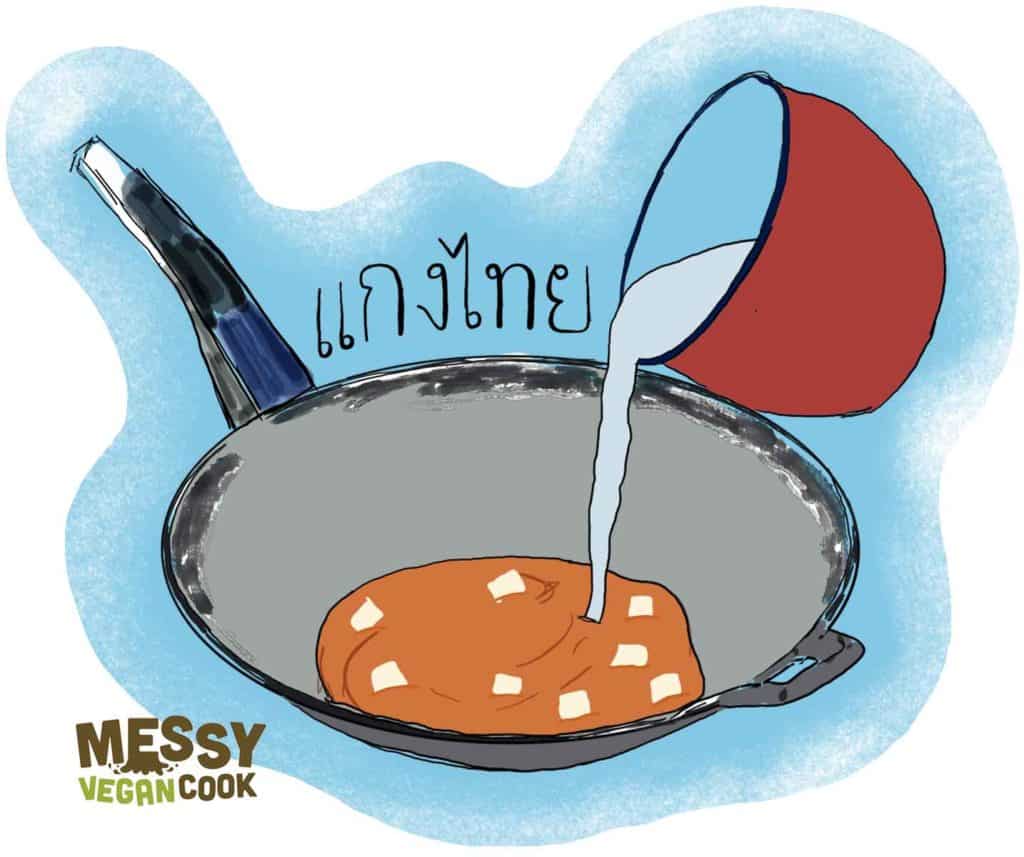
Thai curries are made up of a pounded paste and a liquid. Personal and regional variations mean there are as many curry pastes as there are people pounding them.
There are three major components to any Thai curry, including the paste, the method of cooking, and the final added ingredients. The Thai consideration for balance in food means these three components are of equal importance and when taken together are what distinguishes one curry from the next.
With that in mind, I’m going to simplify by classifying curries into groupings based on the varieties you are likely to come across in stores and at eateries outside of Thailand. This means some sweeping generalisations, but it will do for the purposes of a curry introduction. I’ll also discuss the primary components of the curries and pastes.
The Thai curry rainbow
Red: Tinted (and flavoured) by dried red chillies, these (because there are many types of red curry) are the most versatile of the curry pastes and are used in many different dishes. Not surprisingly the designation of red also encompasses the largest scope of curries, which may or may not be made with coconut milk. Choo chee, a likely player on Western Thai restaurant menus, is a drier (as in less liquid but not devoid of it) variation of a red curry. Hor mok also uses red curry paste.
Green: Not dissimilar in preparation to red curry, green curry paste is simply prepared with green chillies instead of red. It is also likely to contain Thai basil leaves. This coconut cream fried curry is hot, salty, and probably the most common curry in Thailand.
Masaman is the most unique of all the Thai curries since it the paste employs dried Arabic spices such as cinnamon and cardamom, and the final coconut rich curry includes potatoes as an ingredient.
Panang curry, named for the foodie haven island off the coast of Northwest Malaysia, is a type of red curry that is sweet and rich with a lot of coconut cream. Peanuts are often included.
Yellow curry errs on the side of spicy and gets its colour from a combination of chilies and turmeric. Sometimes it showcases flavours typical found in Indian cuisine such as spices that comprise curry powder. A nice accompaniment might be pickled shallots, to help temper the heat a little bit.
Jungle: Originating in Phetchaburi, Jungle curries are salty, hot, and brain-numblingly spicy. Part of the reason is the lack of coconut milk that tempers Southern curries. They are often garnished with fresh green peppercorns and holy basil, tending to not include dried spices.
Sour orange curry paste tends to be used in boiled curries and is the most simple of all Thai curry pastes. The paste is typically made up of just five ingredients (chillies, shallots, garlic, salt, and shrimp paste – use vegan gapi or fermented soybean paste for a vegan version), with tamarind or other souring agents often added to the stock for a sour element.
Home made or store bought?
Some people are real snobs about curry pastes and insist that you should pound your own, but know this: most food vendors in Thailand do not make their own, instead opting to purchase from market vendors.